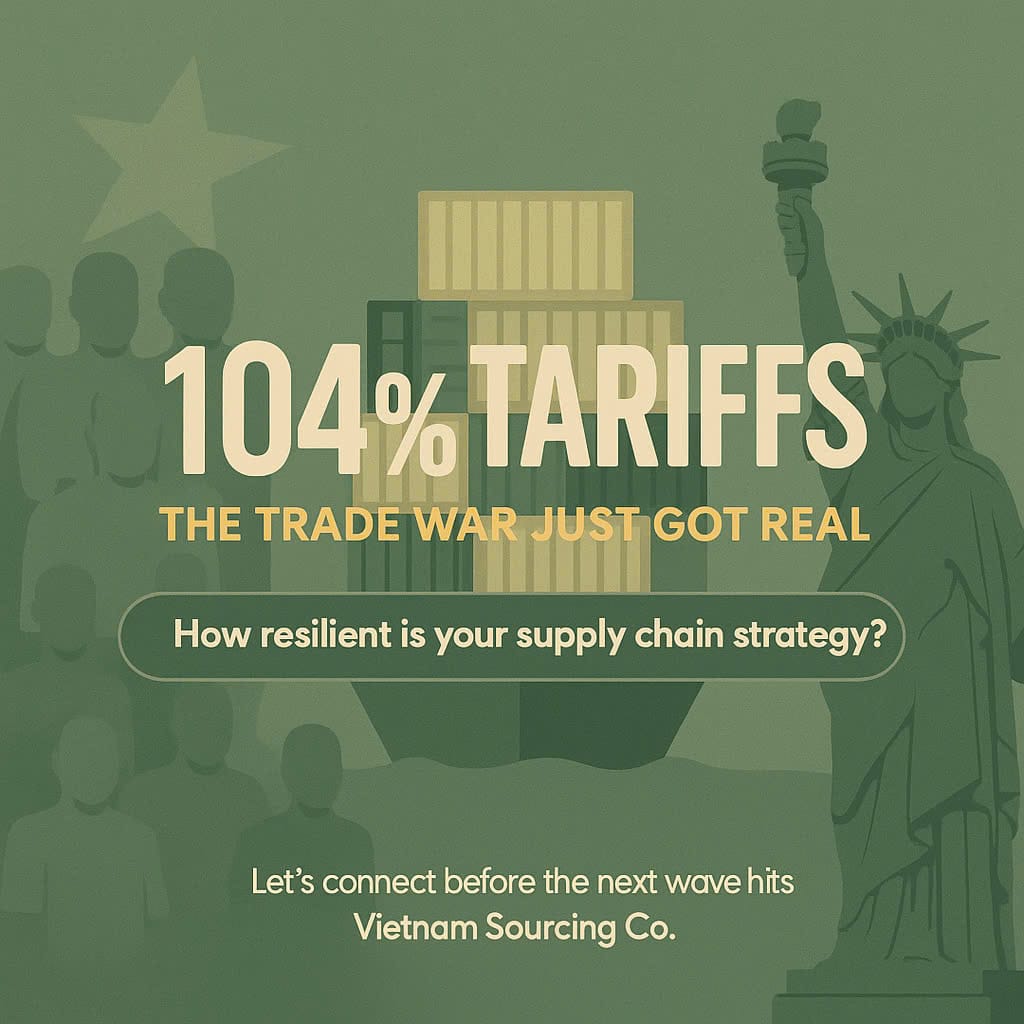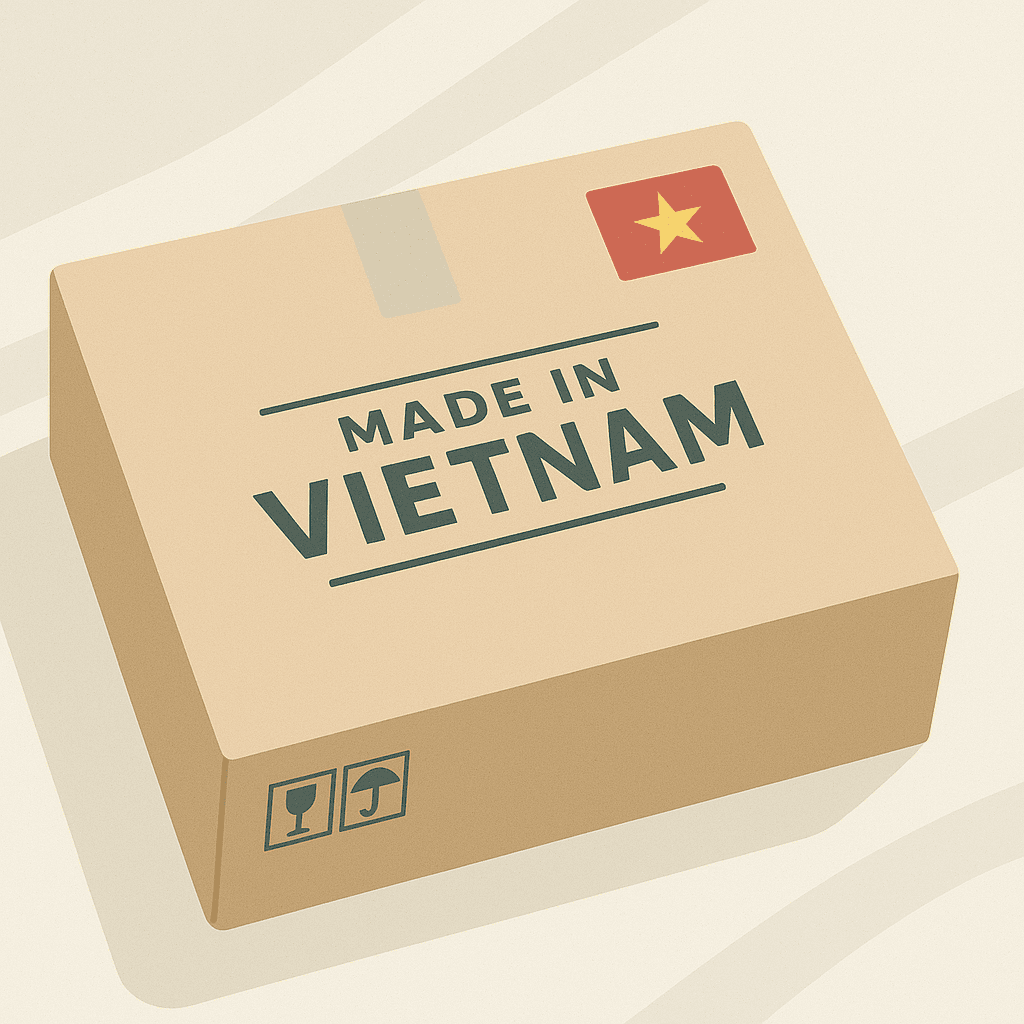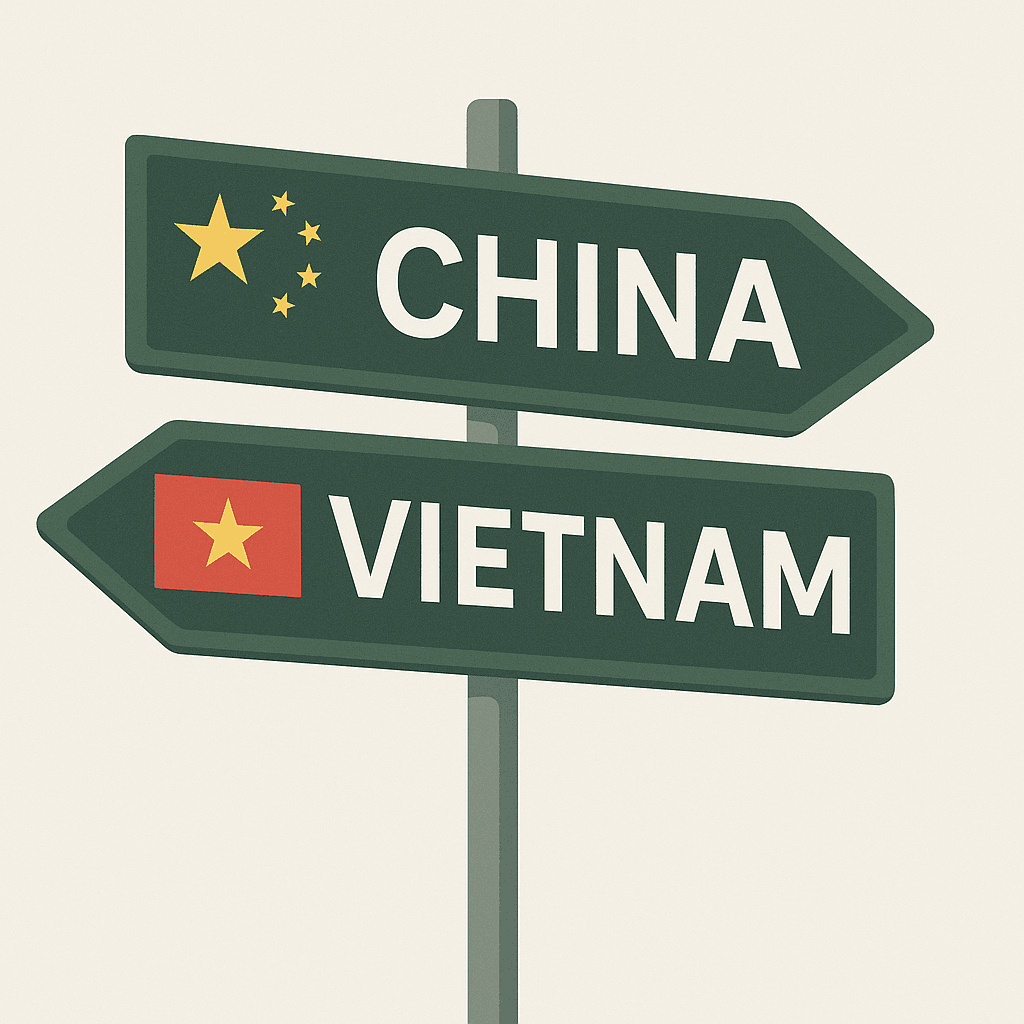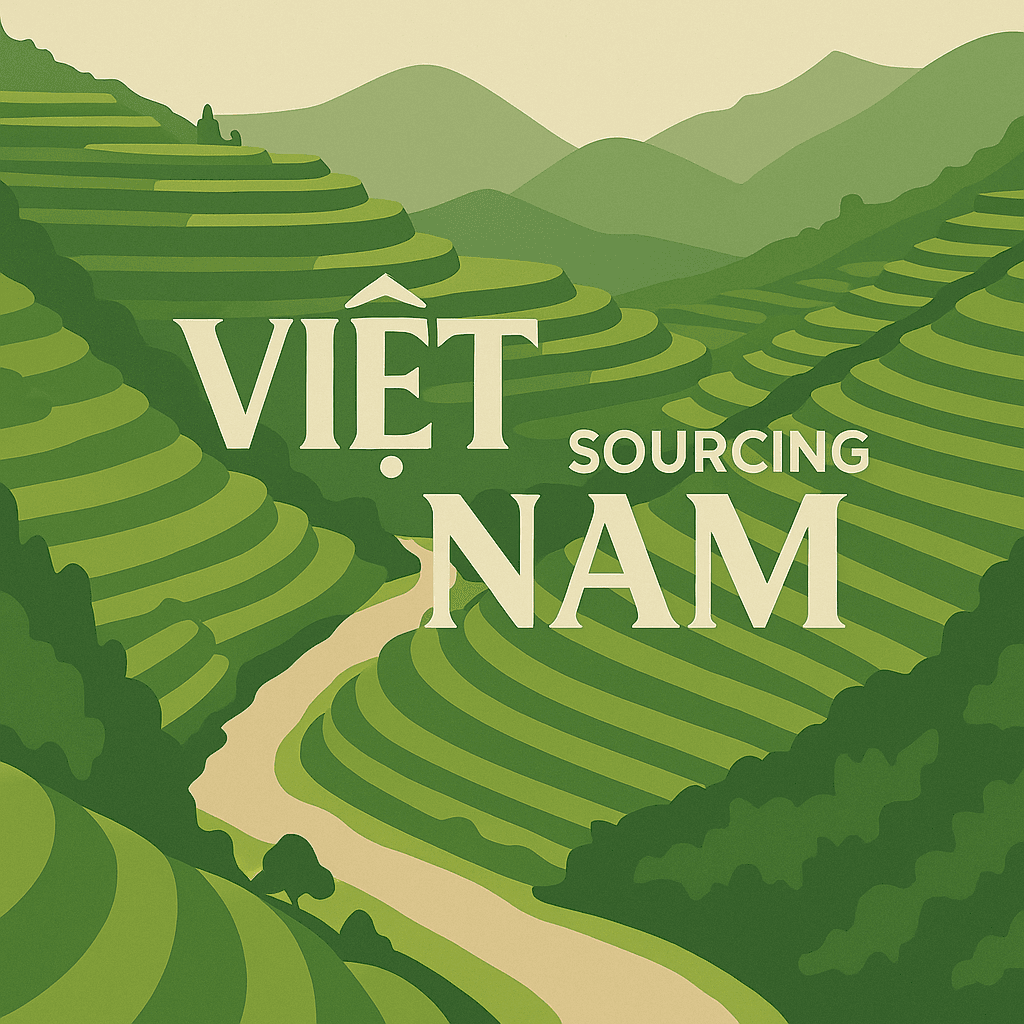Vietnam Sourcing – The April Shock and Its Global Ripple Effects
Tariff escalation to 104% sparks chaos
In early April 2025, the United States imposed an additional 34% tariff on all Chinese imports, bringing the total rate to 54%. Within days, China responded with matching measures. By April 7, further increases were announced, pushing potential total tariffs to 104%.
The market reaction was swift and severe.
– The S&P 500 dropped 4.7% in one day
– Vietnam’s stock market plunged over 5%
– Global buyers began revisiting sourcing strategies for 2025
This rapid escalation has turned a geopolitical standoff into a global procurement crisis.

Vietnam Faces Pressure Yet Gains Attention
Tariffs hit Vietnamese exports at 46%
While Vietnam has been a preferred alternative to China, the new U.S. tariff policy now includes Vietnamese goods at a 46% rate. This affects major export categories such as wooden furniture, apparel, electronics, and packaging.
Despite the hit, the Vietnamese government maintained its GDP target of 8% for 2025 and called emergency meetings to stabilize the economy.
Sourcing in Vietnam Becomes a Strategic Move
Long-term drivers for Vietnam sourcing remain strong
Even under higher tariffs, many companies continue to favor Vietnam due to its structural advantages:
– Competitive labor costs
– A growing base of skilled manufacturers
– Proximity to major shipping lanes and ports
– Trade agreements with EU, UK, Japan, and ASEAN members
Recent customs data shows that U.S. imports from Vietnam increased by 17% in Q1 2025 year-over-year, especially in high-demand sectors like home goods and consumer electronics.

Global Buyers Rethink Their Supply Chain Playbook
The shift from China to Vietnam accelerates
Procurement and sourcing managers are under pressure to reduce risk exposure. Many are:
– Moving non-core product lines to Vietnam
– Testing local suppliers for long-term relocation
– Engaging with sourcing Vietnam agents to manage production
Diversification is no longer a theory. It is now a tactical decision to avoid disruptions caused by sudden tariff shifts or policy changes.

Why Vietnam Sourcing Still Makes Sense
Strategic value beyond cost
Even with a 46% tariff, Vietnam remains a top candidate for supply chain reconfiguration. Here’s why:
– Better factory reliability in certain categories than India or Bangladesh
– Faster shipping times to Western markets compared to inland China
– Availability of suppliers for both OEM and ODM projects
– More transparent compliance environment than some regional peers
In many cases, even with the tariffs, Vietnam sourcing can match or beat Chinese total landed costs when logistics, quality, and flexibility are factored in.

Sourcing Vietnam Agent: A Vital Link
Local support is more important than ever
As demand grows, many importers rely on a sourcing Vietnam agent to help navigate the market. Their role includes:
– Verifying suppliers and conducting audits
– Handling local negotiations and inspections
– Coordinating logistics and production timelines
– Acting as a trusted on-ground extension of global teams
In a volatile global trade climate, having local visibility and faster response times is a major competitive edge.

What’s Next for Vietnam in 2025
Opportunities and outlook despite headwinds
The current trade war is unlikely to ease anytime soon. That said, Vietnam is positioned to benefit from long-term shifts, especially in sectors like:
– Furniture manufacturing
– Custom packaging and printing
– Sustainable textiles
– Light electronics and assembly work
Many multinational firms are building dual or triple-sourcing strategies, and Vietnam is a central part of those plans.
Conclusion
The escalation of tariffs between the U.S. and China marks a turning point in global trade. It is not just about two countries — it is about the restructuring of how and where the world produces.
Vietnam sourcing is no longer just an alternative. For many companies, it has become a strategic foundation for resilience. While challenges exist, the fundamentals of sourcing in Vietnam remain strong, and its role in the global supply chain will likely grow in the years ahead.


